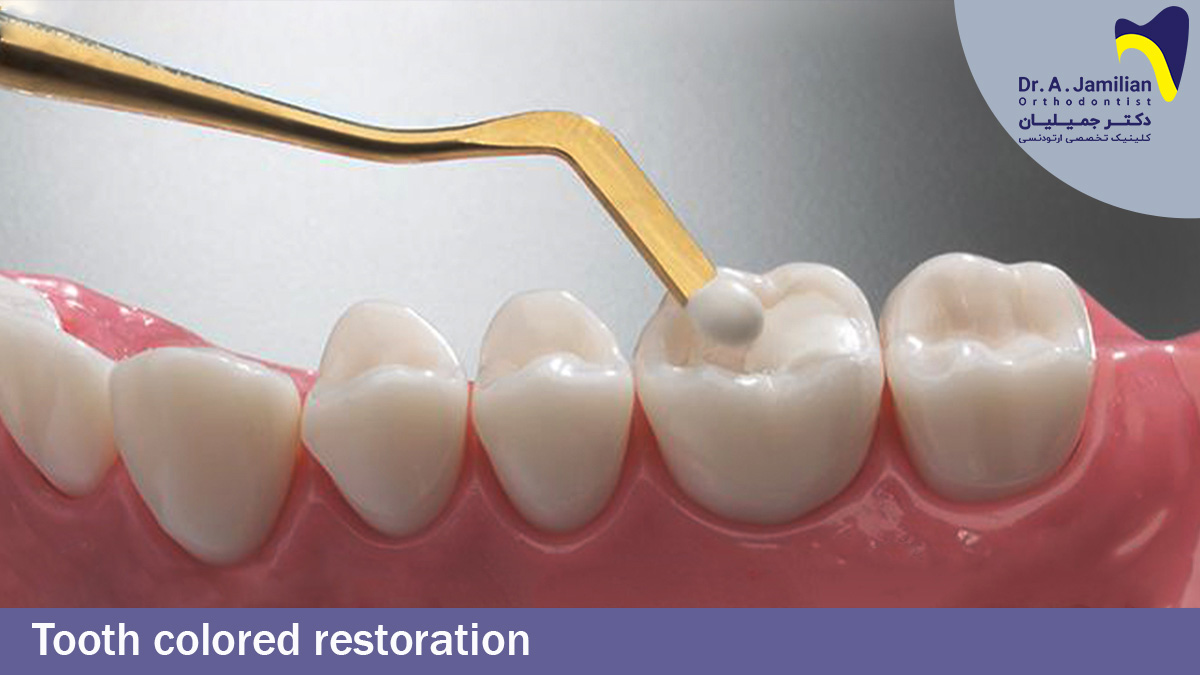Tooth fillings or restorations are among dental procedures applied to restore the beauty and function of the teeth. Dental fillings are practiced to treat tooth cavities, chipped teeth, partial tooth cavities, and superficial tooth destruction. Formerly, teeth were filled with a metal amalgam showing considerable strength and durability. Today, however, people often want their teeth to look natural. For this, there is a need for materials such as composite or porcelain, which are more similar to a natural tooth and look more beautiful.
Types of tooth colored restoration
Composite materials are widely used for white tooth filling and restore tooth decay. These materials appear similar to natural teeth. Glass ionomer cement (GIC) is also used for white tooth fillings.

Comparison of composite and amalgam fillings
The composite filling provides more white teeth and gives much more attractive and natural results than the amalgam. The beauty of the teeth makes the patient more self-assured.
White restorations are not applicable for all teeth and all types of cavities, especially in conditions with a considerable chipped tooth. White restorations are mainly used to treat front teeth and small chipped teeth. Notably, there are special composite materials that can be used to restore large cavities.
The composite filling requires fewer preparations than amalgam, and, thereby, the structure of healthy teeth alters less during filling with composites. Composite materials are less enduring than amalgam, but they can be used for all teeth.

Some patients are metal allergic. Composite teeth filling gives a better appearance and is not allergenic. No study has yet proven mercury toxicity in amalgam procedures. Notably, up to 90% of harmful amalgam substances are removed upon washing teeth after filling. Composite teeth filling requires more equipment and tools than amalgam and is mainly dependent on the skill of the dentist. This feature makes composite filling more expensive than amalgam
Tooth-colored restoration costs
Tooth-colored restoration costs vary depending on the tooth’s position, the number of sessions, the rate of coming out, and the cleaning of the tooth. Most insurance companies avoid covering the additional costs associated with composite materials.
Tooth-Colored Restoration FAQ
1-What is the advantage of composite teeth filling?
In composite fillings, contrary to amalgam (silver) fillings, cavities are filled and chipped parts are restored to more enduring and beautiful because composite materials seem similar to natural teeth in color. White composite fillers are suitable for patients who wish to fill their front teeth.
2-How long do composite fillings last on the front teeth?
The endurance of filling front teeth with composite is not similar to putting veneers, and you should avoid biting hard foods that can cause the composite to crack and break.
3-Are composite fillers strong and durable?
Composite fillers are quite strong and cover the margins teeth and encompass them tightly and densely. Composite fillers are strong enough and can last for several years in the right places.
4-Are white fillers expensive?
White fillers are more costly than amalgam, and filling cavities with white fillers is more complicated than filing with amalgam.
5-Do white fillings have mercury in them?
White or homochromatic fillings contain no mercury or metal. However, composite materials are more expensive than amalgam. The technique of using composite materials is more complicated and takes more time to apply.
6-Can I brush my teeth after tooth filling?
Brush your teeth and apply floss gently. Brushing is quite suitable after filling and you no longer need to wait for a while.
7-Can you eat after filling?
Contrary to amalgam fillers, composite dental fillers allow patients to eat shortly after filling. However, we advise patients to eat only after lightening the local anesthesia, as it is quite hard to eat when your lips and mouth become numb.
8-Do cavity fillings last forever?
While dental fillings are durable, none of the materials used in fillers last forever. If tissues around your tooth are healthy and then no much filling is required, then you can expect your fillings to last a long time.



